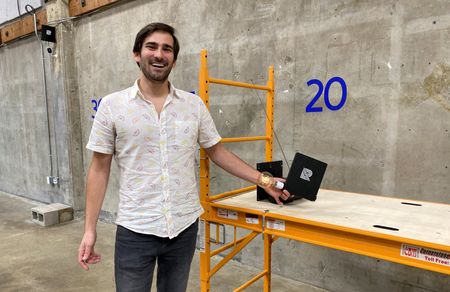By Jane Lanhee Lee
REDWOOD CITY, Calif. (Reuters) – Reach Power Inc, a Silicon Valley startup that beams electricity wirelessly, said on Friday it had raised $30 million in a funding round that will help it commercialize its products.
While big-dish antennas with high-power sources have been used to demonstrate similar technology in the past, Chris Davlantes, Reach founder and CEO said the recent development of high-power antennas that can precisely focus beams of energy, and software improvements for control have made it possible to create effective wireless power transmission systems.
In a demonstration for Reuters, Davlantes connected a radio with no batteries to an antenna-based wireless power receiver that turned on the radio as far as 25 feet (7.6 meters) from the power transmitter.
Asked about the safety of shooting stronger beams of electricity, Dalvantes said the systems can detect objects and switch off or route around them. “We always guarantee when you’re around one of our systems, you’re getting exposure that meets the same limits as all of the cellphones,” he said.
Reach has signed a contract with the U.S. Defense Department for prototypes that can combine multiple energy-beaming modules for stronger power transmission or longer ranges, he said.
Reach has also designed a power chip that can emit and receive waves carrying electricity that will be used in commercial products the company plans to ship in the first quarter. Initial customers include manufacturers and logistics companies using robots and autonomous vehicles.
“Reach will do for power what Wi-Fi did for access to the Internet – cut the cord,” said Matt Ocko, co-founder of DCVC, which led this round of funding. He said there are a handful of other startups in the field but none can match Reach’s “combination of power, distance, scalability, power efficiency, safety and cost-effectiveness.”
(Reporting By Jane Lanhee Lee in Redwood City; Editing by William Mallard)

